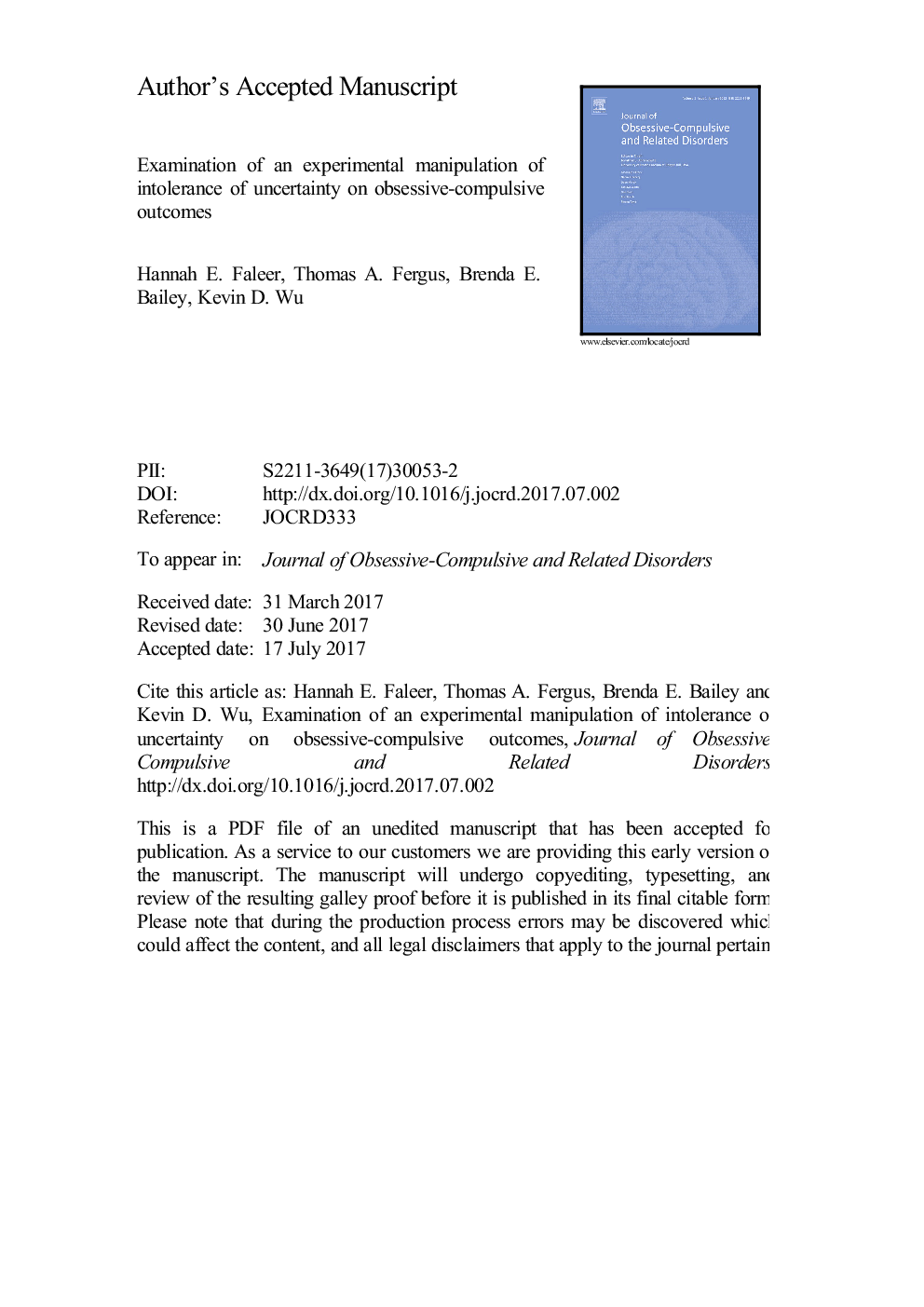ترجمه فارسی عنوان مقاله
بررسی دستکاری آزمایشی عدم تحمل عدم قطعیت در نتایج وسواسی-اجباری
عنوان انگلیسی
Examination of an experimental manipulation of intolerance of uncertainty on obsessive-compulsive outcomes
| کد مقاله | سال انتشار | تعداد صفحات مقاله انگلیسی |
|---|---|---|
| 120032 | 2017 | 40 صفحه PDF |
منبع

Publisher : Elsevier - Science Direct (الزویر - ساینس دایرکت)
Journal : Journal of Obsessive-Compulsive and Related Disorders, Volume 15, October 2017, Pages 64-73
ترجمه کلمات کلیدی
عدم تحمل عدم اطمینان، اختلال وسواسی-اجباری، نگرانی، چک کردن، تجربی،
کلمات کلیدی انگلیسی
Intolerance of uncertainty; Obsessive-compulsive disorder; Worry; Checking; Experimental;

